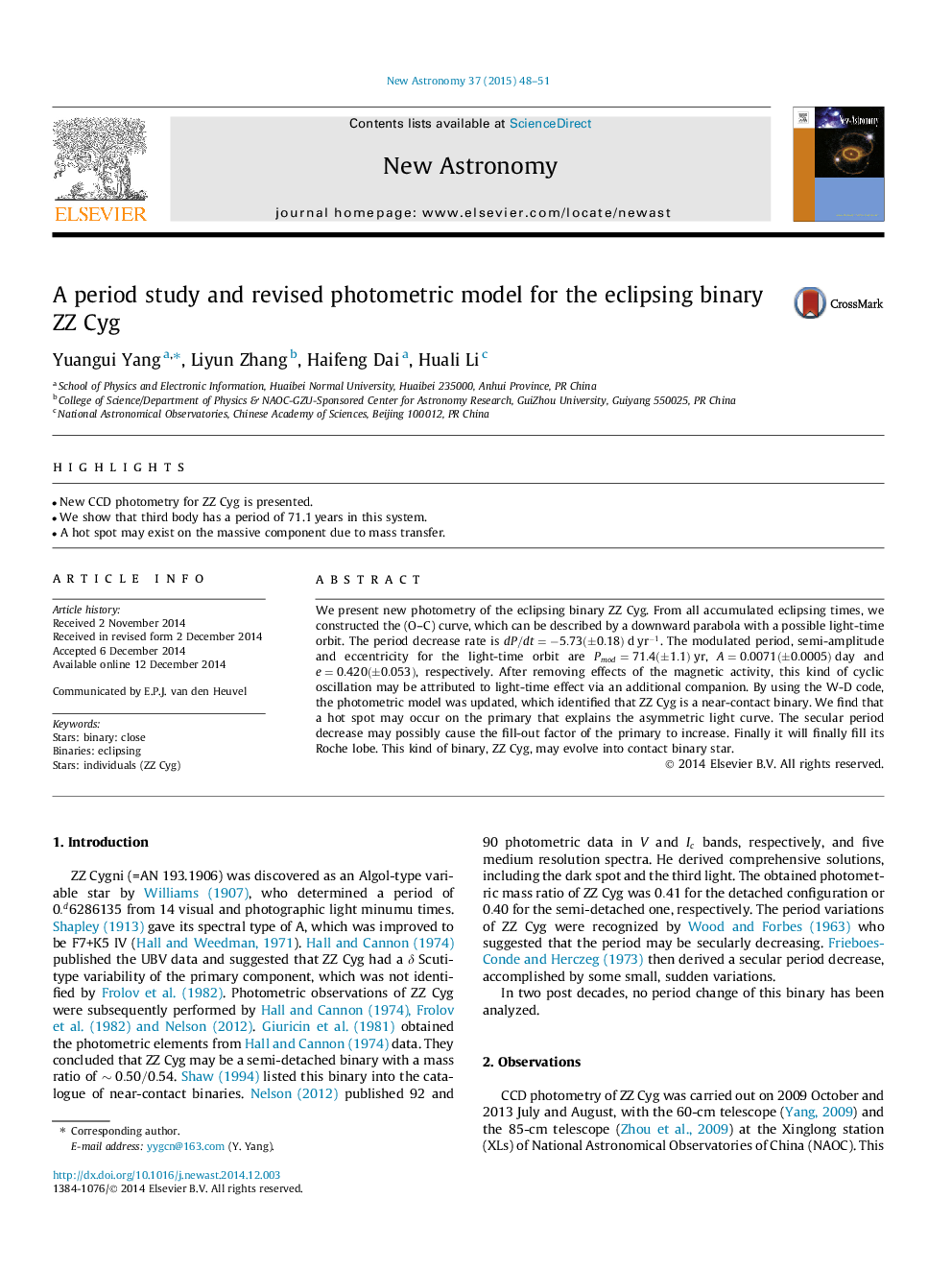| Article ID | Journal | Published Year | Pages | File Type |
|---|---|---|---|---|
| 1778941 | New Astronomy | 2015 | 4 Pages |
Abstract
We present new photometry of the eclipsing binary ZZ Cyg. From all accumulated eclipsing times, we constructed the (O-C) curve, which can be described by a downward parabola with a possible light-time orbit. The period decrease rate is dP/dt=-5.73(±0.18)dyr-1. The modulated period, semi-amplitude and eccentricity for the light-time orbit are Pmod=71.4(±1.1)yr, A=0.0071(±0.0005)day and e=0.420(±0.053), respectively. After removing effects of the magnetic activity, this kind of cyclic oscillation may be attributed to light-time effect via an additional companion. By using the W-D code, the photometric model was updated, which identified that ZZ Cyg is a near-contact binary. We find that a hot spot may occur on the primary that explains the asymmetric light curve. The secular period decrease may possibly cause the fill-out factor of the primary to increase. Finally it will finally fill its Roche lobe. This kind of binary, ZZ Cyg, may evolve into contact binary star.
Related Topics
Physical Sciences and Engineering
Physics and Astronomy
Astronomy and Astrophysics
Authors
Yuangui Yang, Liyun Zhang, Haifeng Dai, Huali Li,
